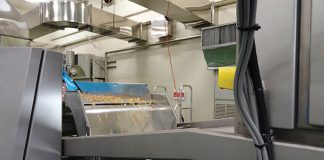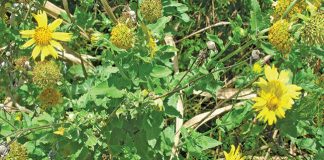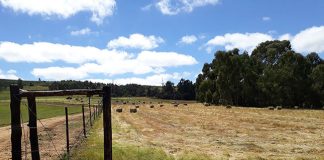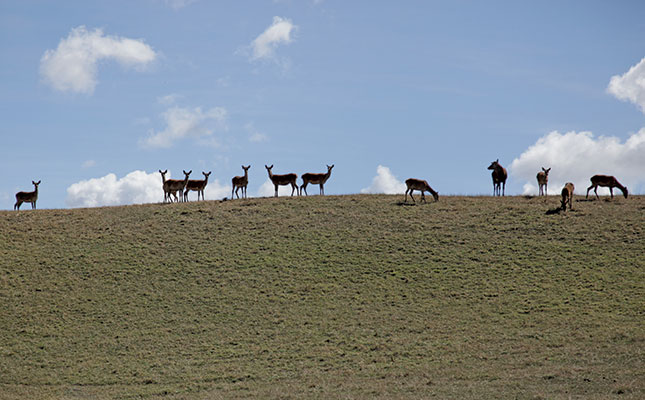
Photo: Gerhard Uys
Bill Robinson has been managing the Raroa Red Deer Stud, near Cambridge, New Zealand, for the past 20 years.
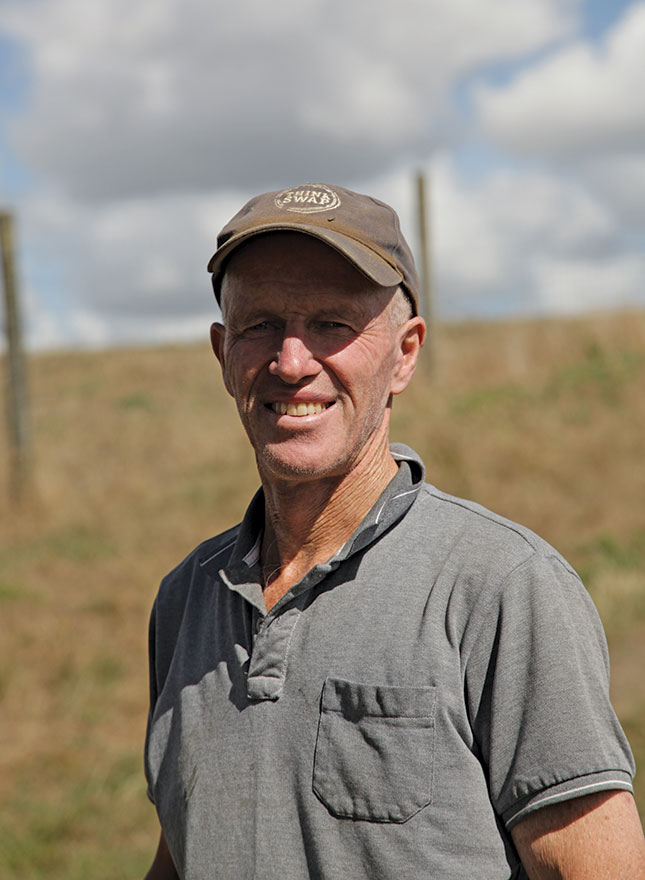
The farm’s primary income is generated from the sale of velvet antlers, the early-growth antlers that have not yet hardened. Raroa also sells stud stags to commercial deer farmers who breed deer for venison exports.
Velveting
The farm runs approximately 350 breeding hinds, which produce about 300 calves a year. All the stags are velveted (dehorned) at one year old.
They are then kept until the end of their second year, when Robinson selects the animals to keep in the stud (usually about 90) and those to place in the velvet herd (about 50). The remainder (about 30) are sold to commercial breeders as breeding stock for venison production, and approximately 10 are culled.
A stag grows a new set of antlers every year, with growth beginning in August. Before calcification, the new antler is covered in velvet. After about 60 days of growth, and before the antler calcifies in December, it is cut off. The product is graded, frozen, and exported by agents.
Velvet antlers were initially used in Asia as a traditional medicine or aphrodisiac, but are now sold to a younger Asian market as a health supplement.
New Zealand exports more than 700t of velvet antlers a year.
“It used to be 500t a year,” recalls Robinson. “The industry thought that that amount would saturate the market. But even with over 700t sold a year, there’s still huge demand.
“The market for velvet provides our biggest income. A stag grows beardicles [the first growth of antlers] in August at a rate of about 25mm a day. We allow the antlers to grow for about 60 days, then we cut it above the coronet so it’ll grow again.
“A pair of one-year-old velvet antlers weighs about 1kg, a pair of two-year-old antlers are 2,5kg to 4kg, and a three-year-old pair are between 6kg and 7kg. We harvest them early in summer, before they reach 40cm to 50cm in length, depending on the circumference.”
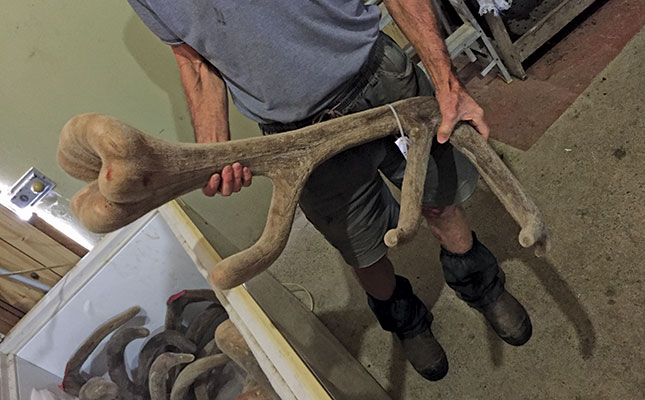
A stag will be used for velveting until it is about nine years old, after which it is allowed to grow a full set of mature antlers. It is then sold for trophy hunting.
Red Deer
The farm breeds an 80%/20% composite-type animal from Eastern European and English Red Deer genetics respectively. The former has large antlers and a large body, while the latter is small and stocky.
The combination results in a trophy-length antler with good points, thick velvet, and a large body for venison.
Stags bred for venison are selected for body length. In those bred for velvet, thick coronets are desirable. These and trophy size are hereditary. Commercial velvet breeding stags are sold at three years old with their antlers intact, allowing buyers to see the size of antlers they produce.
“The best velveter has a small body, with large antlers for velvet. It eats less and needs lower maintenance. We want a composite stag that’ll be big for venison, have long antlers for trophy hunting, and have thick velvet,” Robinson says.
Hinds must be large enough to avoid calving problems.
Breeding and feeding
The calves are weaned at four months (March) and this marks the start of the new breeding season.
The so-called roar, when stags begin roaring loudly and fighting to establish dominance for breeding rights, begins in April. During this time, a breeding stag is placed with 50 hinds.
Hinds have three cycles, each 17 days apart.
On 6 May every year, stags are removed from the hind camps. Hinds gestate for about 233 days, and calving usually begins on 1 November.
An anal scan is used to test which hinds are pregnant.
As single-sire mating is used at Raroa, a follow-up stag is never used. Correct feed management ensures that the hinds are in good enough condition to conceive.
The greater part of useable land at Raroa is planted to rye and clover. Robinson also mixes plantain and chicory into the pastures. About 18kg rye seed, 2kg cocksfoot, 4kg white clover seed, 2kg red clover, 1kg chicory and 1kg plantain are planted per hectare.
“We were using chicory and plantain in the feed mix when most people thought they were weeds,” he says.
The area receives an annual rainfall of about 1 100mm, most of it between June and August. With plenty of grass growth at this time, stocking rates are increased to prevent hinds from becoming too fat and possibly not conceiving.
Hind herds can be as large as 350 animals, and the animals are rotated frequently between paddocks.
In the drier months, Robinson feeds his hinds maize to assist in milk production. Maize is also given to calves so that they are adapted to it once weaned.
If the deers’ body condition regresses, he separates the animals into paddocks with lower stocking densities.
Before the start of the mating season, hinds receive silage every day to ensure good body condition.
In winter, the stocking density is around 17 small-stock units (SU)/ha. Robinson measures grazing capacity by eye, but says that he will never graze rye to under the two-leaf stage. A stag is classified as 3,3SU, a hind as 2,1SU, and a weaner calf as 1,8SU.
Animal health
According to Robinson, deer farmers dewormed too frequently in the past, and this led to internal parasites developing resistance to anthelmintics.
For this reason, he deworms at weaning, six months and 12 months of age, and thereafter, never again.
A vaccine that addresses five clostridial diseases and leptospirosis is administered at tagging (two months old), with a booster given at weaning and at 12 months.
Due to the high tick population in the area, the deer tend to have heavy tick loads, and a pour-on acaricide is therefore administered every time the animals are handled in the deer shed.
There are no tick-borne diseases in New Zealand, but excessive tick loads can lead to blood loss in young deer and must be managed. Ticks also sit on velvet, damaging it.
Facial eczema is another problem encountered in the area, particularly during wetter seasons, so Robinson selects stags that are resistant to this condition for breeding purposes.
He culls about 120 deer every year. These typically consist of hinds too small to breed, velveters that do not produce enough velvet, and two-year-old breeding stags that are too light. An average stag carcass weighs between 50kg and 60kg, while that of a mature stag can reach 130kg.
Infrastructure
Although deer have been domesticated, they are still wild animals and are therefore handled differently from sheep or cattle.
However, Robinson points out that skittish deer become quiet once inside a handling shed, giving handlers a chance to “put a hand on their backs” to measure body condition scores.
To make handling possible, deer-handling sheds have to be built with ‘deer psychology’ in mind. Unlike sheep and cattle, which are more at ease in handling facilities where they can see where they are going and see this as a form of escape, deer feel safer when they think they are hiding undercover.
Facilities therefore mimic a natural environment where the animals can ‘hide’ from the human threat. Handling facilities have high wooden doors, and a system of gates that can be opened to enable the deer to ‘escape’ to where the handler wants them to be.
The deer are constrained in crushes for tagging, drenching and velveting. These have high wooden sides, with canvas sheets on either side to prevent the animals from seeing outside.
Starting a deer farm
For a new entrant into the deer market, the highest initial infrastructure cost is erecting a 1,8m game fence. A commercial hind costs about NZ$600 (about R6 000), with a stud stag costing NZ$10 000 (R100 000). Many new entrants buy two-year-old velvet culls as commercial stags.
As land and initial costs are high, the early large deer farms were started by trusts, and managers with sheep and beef backgrounds were employed to run them.
Today, the deer industry is far bigger, with deer farmers relying on each other and industry organisations to keep the industry profitable.
Email Bill Robinson at [email protected].








